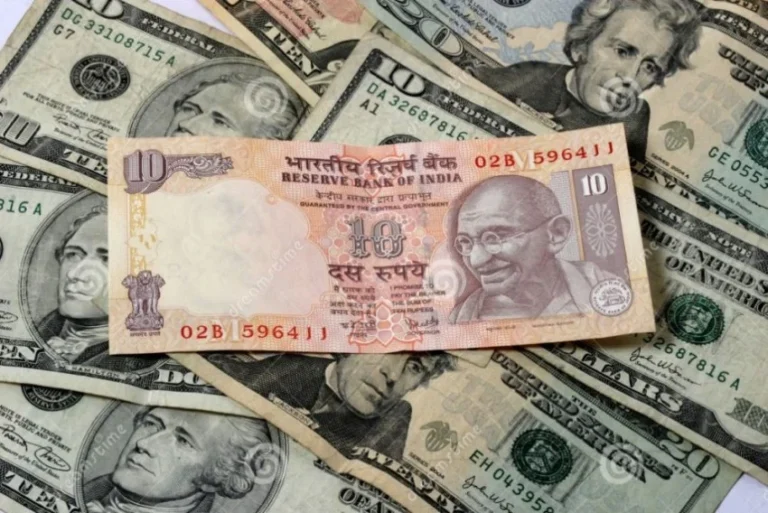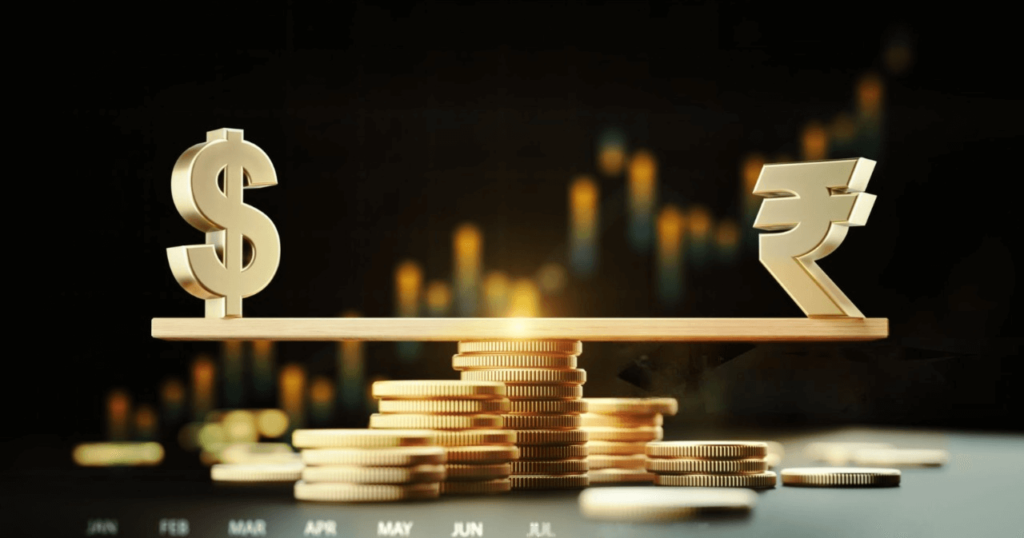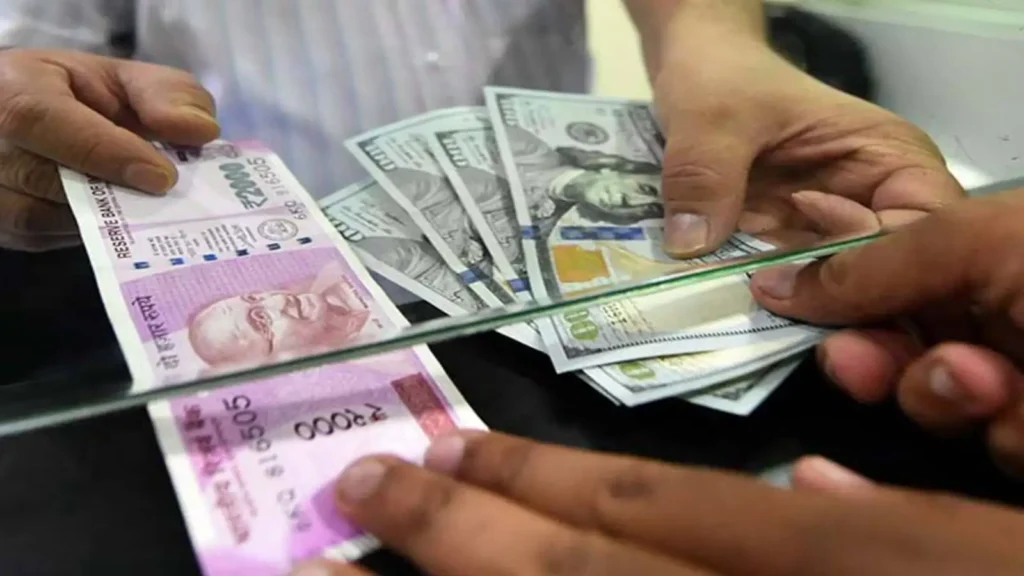The Rupee Dollar Money Currency Dance: What You Need to Know
Posted On August 3rd, 2025
Array
The intricate relationship between the Indian Rupee Dollar Money Currency is a topic that captivates everyone, from economists to the average person. We constantly hear about the exchange rate. We feel its effects on our finances, whether we’re planning a trip abroad, buying an imported gadget, or just paying for everyday goods. This dynamic interplay of currency and money is far more complex than a simple number. It reflects the deep, interconnected economic realities of two nations. This blog post will explore this crucial relationship in detail. It sheds light on its history, the forces that shape it, and why a “stronger” Rupee isn’t always best for India’s economy.
The Historical Journey of the Rupee and Dollar
To truly understand the current state, we must first look back. At the time of India’s independence in 1947, the exchange rate was remarkably simple. One US Dollar equaled one Indian Rupee. This was a time of political optimism. It was a symbol of the young nation’s hope and potential.
Over the decades, economic shifts, policy decisions, and global market forces have eroded this parity. The value of the Rupee has steadily depreciated. Today, the exchange rate is a stark contrast. A single Dollar commands a significant number of Rupees. This journey from parity to the present is a powerful reminder. It shows how global economic power has shifted. It also shows how local factors can impact a nation’s currency. For a deeper dive into how this has impacted foreign investment, read our post on The History of Foreign Investment in India.

The Hypothetical Dream: One Dollar Equals One Rupee
The idea of the Rupee and Dollar having the same value is very appealing. It suggests economic power and prosperity. Let’s imagine what this hypothetical world would be like.
The Benefits of a 1:1 Exchange Rate
On the surface, the benefits are clear and numerous. First, your travel money would go much further. International vacations would become an accessible reality for millions of Indians. Imported luxury goods would also get cheaper. That expensive foreign car, the latest smartphone, or designer handbag would suddenly be more affordable.
Furthermore, India’s import costs would drop. This would be particularly impactful for essentials like oil, which India heavily relies on. Lower oil prices would, in turn, lower transportation costs and ease inflation. Finally, overseas education would become more affordable. Sending children abroad for studies would no longer be a huge financial burden. Tuition fees and living expenses would be a fraction of their current Rupee cost.
The Drawbacks of a 1:1 Exchange Rate
The video and economic analysis reveal a sobering reality. The most significant drawback would be the catastrophic impact on foreign investment. Foreign companies are attracted to India because of its skilled, yet relatively inexpensive, labor. This cost advantage would completely disappear if the Rupee equaled the Dollar.
Why would a multinational company continue to employ a large Indian workforce at the same salary as their US or European counterparts? This would lead to a massive pullout of foreign companies, especially from the critical IT and service sectors. The resulting unemployment would be staggering, triggering a severe economic crisis. The prosperity promised by a 1:1 exchange rate would likely be a mirage. It could lead to an economic collapse instead of a boom. The money saved on imports and travel would be overshadowed by a national crisis.
The Mechanics of Rupee Dollar Currency Exchange
To truly appreciate the complex nature of currency, you must understand how exchange rates are determined. The video highlights three primary types of exchange rate systems.
- Fixed Exchange Rate: A government or central bank sets a specific value for its currency. It then intervenes in the market to maintain this fixed rate. While this system offers stability, it can limit a country’s monetary policy flexibility.
- Floating Exchange Rate: Here, the market takes control. The value of the currency is determined by supply and demand. If a country’s goods are in high demand, demand for its currency increases, raising its value. Conversely, if demand falls, the currency depreciates.
- Managed Exchange Rate: This system is a hybrid of the other two. The government allows the currency to fluctuate within a specific range but intervenes to prevent it from moving outside that band. This provides a balance of market flexibility and government control. Many emerging economies use this approach.
India operates on a managed floating exchange rate system. This means market forces play a big role, but the Reserve Bank of India (RBI) can and does intervene to smooth out excessive volatility. You can find more information on the RBI’s role on their official website here.
The Drivers of Rupee Dollar Money Currency Value
A nation’s currency value reflects its overall economic health. Several factors, both internal and external, contribute to the rise or fall of the Rupee.
- Supply and Demand: This is the most fundamental principle. High demand for Indian goods and services increases the demand for Rupees. This, in turn, boosts the Rupee’s value. A high demand for imported goods from India, on the other hand, increases the demand for foreign currency, putting downward pressure on the Rupee.
- Inflation: High inflation in India relative to other countries makes Indian goods less competitive. This reduces foreign demand for the Rupee.
- Unemployment: A high unemployment rate indicates a struggling economy. This can negatively impact investor confidence and the value of the currency.
- Trade Balance: A trade deficit (where imports exceed exports) increases the demand for foreign currency to pay for the imports. This puts downward pressure on the Rupee.
- Foreign Investment: Inflows of foreign direct investment (FDI) and foreign institutional investment (FII) bring foreign currency into the country. This increases the supply of dollars and other currencies, boosting the value of the Rupee.
Devaluation vs. Depreciation: Understanding the Difference
In the world of currency and money, two terms are often confused. They have distinct meanings.
- Devaluation: A government makes a deliberate, political decision to reduce the value of its currency. A government might do this to make its exports cheaper and more competitive in the global market, stimulating economic growth.
- Depreciation: A currency’s value decreases due to market forces, without direct government intervention. This could be triggered by a trade deficit, political instability, or a shift in global market sentiment.
The recent decline of the Rupee against the Dollar is a classic example of depreciation. Market forces and global economic conditions, like the strengthening of the US Dollar and rising oil prices, have largely driven it.

A Strong or Weak Currency: What’s Best for India?
There is no simple answer to this question. The ideal currency value depends heavily on a country’s economic structure and priorities.
- Export-Oriented Economies: Nations like Germany and China often benefit from a weaker currency. A weaker currency makes their exports cheaper and more competitive. This boosts their manufacturing sectors and creates jobs.
- Import-Oriented Economies: Countries that rely heavily on imports may prefer a stronger currency. A strong currency allows them to purchase imported goods and raw materials at a lower cost.
India finds itself in a unique position. It relies on both imports (especially oil) and exports (particularly in services and IT). While a weaker Rupee makes imports more expensive for consumers, it also gives a crucial advantage to the service and IT sectors that serve foreign clients. Their services become cheaper for foreign companies. This helps them secure more business and grow. Therefore, a balance is necessary. A slight depreciation is not necessarily a bad thing for India’s export-driven economy.
Charting a Path Forward for our Rupee Dollar Money Currency
The video proposed several key solutions. Experts advocate for them to ensure the long-term stability and strength of the Indian Rupee and the national economy. These solutions do not aim to force an artificial exchange rate. They aim to build a more resilient and self-reliant economic structure.
- Reduce Import Dependency, Especially on Oil: India’s massive oil import bill is the single biggest drain on its foreign exchange reserves. India can significantly reduce this dependency by promoting electric vehicles, investing in renewable energy sources, and improving public transport. This would reduce the demand for US dollars and strengthen the Rupee. For more on this, check out a recent article on India’s energy transition here.
- Diversify Exports: India needs to expand its export base beyond the traditional strongholds of services and IT. Promoting manufacturing and other sectors creates multiple ways to earn foreign currency. This mitigates the risks of over-relying on one or two sectors.
- The Exchange Rate Isn’t the Only Measure of a Country’s Strength: The video correctly pointed out that currency value does not always directly correlate with a country’s development. For instance, the Japanese Yen is relatively weak compared to the Dollar. Still, Japan is one of the world’s most technologically advanced and developed nations. This is a powerful example. A government’s focus should be on building a strong and inclusive economy, not on a specific exchange rate. The real measure of a nation’s prosperity is the quality of life for its citizens, the robustness of its infrastructure, and the health of its industries.
- Embrace a Nuanced View of Money and Currency: The video concludes with a profound insight. The actual value of a currency is relative. A government can change the numerical value of its money without changing its citizens’ actual purchasing power. The focus should be on creating a stable economic environment where citizens can prosper. The Rupee can then reflect that underlying strength.
Conclusion: A Deeper Understanding of Our Money
The relationship between the Indian Rupee Dollar Money Currency is a microcosm of global economic dynamics. It’s a story of trade, investment, and national policy. The dream of a 1:1 exchange rate might be a fantasy. However, the video makes it clear that the focus should be on building a strong, diversified, and resilient Indian economy.
We can appreciate the nuanced reality that a nation’s true wealth is not measured solely by the value of its money on the global stage. It is measured by the health of its economy and the prosperity of its people. This is the ultimate lesson about money for all of us.
Related Posts

How to Master Google Search Console and Scale Your Organic Traffic to No. 1
Posted on December 27th, 2025
Google Search Console serves as the primary technical bridge between your digital infrastructure and the world’s most sophisticated search engine. It is a robust, cost-free web service that empowers...
Read More →
How to Find Trending Keywords on Google?
Posted on December 24th, 2025
Trending keywords on Google are the backbone of every successful search strategy. When you know what is trending, which keywords people type into Google, and how those searches change...
Read More →
What Is Google Search Console? | Website Management Guide for Growth, Rankings, and Visibility |
Posted on December 23rd, 2025
Google Search Console is one of the most powerful google search console website management tools available today. If you want your website to rank higher on Google search, understand...
Read More →
Meta Business Suite for Instagram and Facebook: The Complete Guide for Business Growth
Posted on December 20th, 2025
Meta Business Suite is one of the most powerful tools for any business that wants to grow on Instagram and Facebook using one central dashboard. In today’s digital world,...
Read More →© All Copyright Reserved japjitravel.com
Leave a Comment :